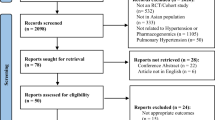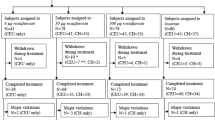Abstract
This study was conducted to explore interactions in the association of the kininogen (KNG1) Ile197Met polymorphism and gender with plasma concentrations of irbesartan in Chinese patients with essential hypertension. A total of 1100 subjects with essential hypertension received a daily oral dose of 150 mg irbesartan for twenty-eight consecutive days. High-performance liquid chromatography-fluorescence (HPLC) was used to detect plasma irbesartan concentrations on day 28. The KNG1 Ile197Met gene polymorphism was determined using high-throughput TaqMan technology. The frequency distribution of KNG1 Ile197Met genotype conformed to the Hardy-Weinberg equilibrium. After 28 days of treatment, patients with the GG genotype had significantly lower irbesartan concentrations (P = 0.033) compared to homozygous TT genotype carriers. After stratifying by gender, male G allele carriers had significantly lower irbesartan concentrations (GG, P = 0.015; TG, P = 0.015, respectively) relative to TT genotype after adjusting for age, region, body mass index (BMI), smoking, and alcohol consumption. However, there was no significant difference in female subjects. A further test for a multiplicative interaction between the KNG1 Ile197Met polymorphism and gender in association with ln-plasma irbesartan concentrations in a multiple linear regression model was also significant (P for interaction = 0.033). This is the first study to suggest that gender may influence the association of the Ile197Met variant of KNG1 with ln-plasma irbesartan concentration. This finding may indicate that the interaction of gender and the KNG1 Ile197Met gene polymorphism can influence plasma trough irbesartan concentrations, which may contribute to a better development of personalized hypertensive treatment in Chinese patients.
This is a preview of subscription content, access via your institution
Access options
Subscribe to this journal
Receive 12 digital issues and online access to articles
$119.00 per year
only $9.92 per issue
Buy this article
- Purchase on Springer Link
- Instant access to full article PDF
Prices may be subject to local taxes which are calculated during checkout

Similar content being viewed by others
References
Poulter NR, Prabhakaran D, Caulfield M. Hypertension. Lancet. 2015;386:801–12.
Lackland DT, Weber MA. Global burden of cardiovascular disease and stroke: hypertension at the core. Can J Cardiol. 2015;31:569–71.
Ruilope LM, Segura J. The importance of integrated risk management when treating patients with hypertension: benefits of angiotensin II receptor antagonist therapy. Clin Exp Hypertens. 2008;30:397–414.
Gialama F, Maniadakis N. Comprehensive overview: efficacy, tolerability, and cost-effectiveness of irbesartan. Vasc Health Risk Manag. 2013;9:575–92.
Mercier K, Smith H, Biederman J. Renin-angiotensin-aldosterone system inhibition: overview of the therapeutic use of angiotensin-converting enzyme inhibitors, angiotensin receptor blockers, mineralocorticoid receptor antagonists, and direct renin inhibitors. Prim Care. 2014;41:765–78.
Croom KF, Curran MP, Goa KL, Perry CM. Irbesartan: a review of its use in hypertension and in the management of diabetic nephropathy. Drugs. 2004;64:999–1028.
Madeddu P, Emanueli C, El-Dahr S. Mechanisms of disease: the tissue kallikrein-kinin system in hypertension and vascular remodeling. Nat Clin Pract Nephrol. 2007;3:208–21.
Lalmanach G, Naudin C, Lecaille F, Fritz H. Kininogens: more than cysteine protease inhibitors and kinin precursors. Biochimie. 2010;92:1568–79.
Revenko AS, Gao D, Crosby JR, Bhattacharjee G, Zhao C, May C, et al. Selective depletion of plasma prekallikrein or coagulation factor XII inhibits thrombosis in mice without increased risk of bleeding. Blood. 2011;118:5302–11.
Fong D, Smith DI, Hsieh W-T. The human kininogen gene (KNG) mapped to chromosome 3q26-qter by analysis of somatic cell hybrids using the polymerase chain reaction. Hum Genet. 1991;87:189–92.
Kitamura N, Kitagawa H, Fukushima D, Takagaki Y, Miyata T, Nakanishi S. Structural organization of the human kininogen gene and a model for its evolution. J Biol Chem. 1985;260:8610–7.
Pathak M, Wong SS, Dreveny I, Emsley J. Structure of plasma and tissue kallikreins. Thromb Haemost. 2013;110:423–33.
Zhao W, Wang Y, Wang L, Lu X, Yang W, Huang J, et al. Gender-specific association between the kininogen 1 gene variants and essential hypertension in Chinese Han population. J Hypertens. 2009;27:484–90.
Jiang S, Mao G, Zhang S, Hong X, Tang G, Li Z, et al. Individual and joint association of alpha1A-adrenergic receptor Arg347Cys polymorphism and plasma irbesartan concentration with blood pressure therapeutic response in Chinese hypertensive subjects. Clin Pharmacol Ther. 2005;78:239–48.
He SM, Zhou ZW, Li XT, Zhou SF. Clinical drugs undergoing polymorphic metabolism by human cytochrome P450 2C9 and the implication in drug development. Curr Med Chem. 2011;18:667–713.
Regoli D, Gobeil F. Kallikrein-kinin system as the dominant mechanism to counteract hyperactive renin-angiotensin system. Can J Physiol Pharmacol. 2017;95:1117–24.
Gu D, Zhao Q, Kelly TN, Hixson JE, Rao DC, Cao J, et al. The role of the kallikrein-kinin system genes in the salt sensitivity of blood pressure: the GenSalt Study. Am J Epidemiol. 2012;176(suppl_7):S72–S80.
Chen LM, Chung P, Chao S, Chao L, Chao J. Differential regulation of kininogen gene expression by estrogen and progesterone in vivo. Biochim Biophys Acta. 1992;1131:145–51.
Lourdusamy A, Newhouse S, Lunnon K, Proitsi P, Powell J, Hodges A, et al. Identification of cis-regulatory variation influencing protein abundance levels in human plasma. Hum Mol Genet. 2012;21:3719–26.
Yamamoto A, Keil LC, Reid IA. Effect of intrarenal bradykinin infusion on vasopressin release in rabbits. Hypertension. 1992;19(6 Pt 2):799–803.
Probstfield JL, O’Brien KD. Progression of cardiovascular damage: the role of renin–angiotensin system blockade. Am J Cardiol. 2010;105:10A–20A.
Nussberger J, Wuerzner G, Jensen C, Brunner HR. Angiotensin II suppression in humans by the orally active renin inhibitor Aliskiren (SPP100): comparison with enalapril. Hypertension. 2002;39:E1–8.
Zhang Y, Wang L, Song Y, Zhao X, Wong MS, Zhang W. Renin inhibitor aliskiren exerts beneficial effect on trabecular bone by regulating skeletal renin-angiotensin system and kallikrein-kinin system in ovariectomized mice. Osteoporos Int. 2016;27:1083–92.
Dzau VJ, Colucci WS, Hollenberg NK, Williams GH. Relation of the renin-angiotensin-aldosterone system to clinical state in congestive heart failure. Circulation. 1981;63:645–51.
Miura S-i, Karnik SS, Saku K. Angiotensin II type 1 receptor blockers: class effects versus molecular effects. J Renin Angiotensin Aldosterone Syst. 2011;12:1–7.
Nickenig G, Baumer AT, Grohe C, Kahlert S, Strehlow K, Rosenkranz S, et al. Estrogen modulates AT1 receptor gene expression in vitro and in vivo. Circulation. 1998;97:2197–201.
Hinojosa-Laborde C, Craig T, Zheng W, Ji H, Haywood JR, Sandberg K. Ovariectomy augments hypertension in aging female Dahl salt-sensitive rats. Hypertension. 2004;44:405–9.
Harrison-Bernard LM, Schulman IH, Raij L. Postovariectomy hypertension is linked to increased renal AT1 receptor and salt sensitivity. Hypertension. 2003;42:1157–63.
Chung O, Unger T. Pharmacology of angiotensin receptors and AT1 receptor blockers. Basic Res Cardiol. 1998;93:15–23.
Marino MR, Vachharajani NN. Pharmacokinetics of irbesartan are not altered in special populations. J Cardiovasc Pharmacol. 2002;40:112–22.
Dorado P, Beltran LJ, Machin E, Penas-Lledo EM, Teran E, Llerena A. Losartan hydroxylation phenotype in an Ecuadorian population: influence of CYP2C9 genetic polymorphism, habits and gender. Pharmacogenomics. 2012;13:1711–7.
Reeves RA, Lin CS, Kassler-Taub K, Pouleur H. Dose-related efficacy of irbesartan for hypertension: an integrated analysis. Hypertension. 1998;31:1311–6.
Acknowledgements
We gratefully acknowledge the assistance and cooperation of the faculty and staff of Anhui Medical University and thank all of the participants in our study. This study was conducted in accordance with the current regulations of the People’s Republic of China.
Funding
This study was supported by the National Natural Science Foundation of China (Grant No. 81373484, 81141116, and 30700454); Open fund for Discipline Construction, Institute of Physical Science and Information Technology, Anhui University; the Academic Top Talents Funding of University (No. gxbjZD2016008) and the Academic Leader and Reserve Candidate of Anhui Province (No. 05010543).
Authors’ contributions:
SH and JC: literature search, collecting data, processing data, data interpretation, analyzing data, and writing manuscript; JW: literature search, data interpretation, and commenting on manuscript; XF: literature search, processing data, and data interpretation; SV: data interpretation and commenting on manuscript; YH: study design, data interpretation, and commenting on manuscript; SW: processing data; FP: study design, data interpretation; JS and SJ: study design, data interpretation, writing manuscript; XX: study design, data interpretation, commenting on manuscript. All authors read and approved the final manuscript.
Author information
Authors and Affiliations
Corresponding authors
Ethics declarations
Conflict of interest
The authors declare that they have no conflict of interest.
Rights and permissions
About this article
Cite this article
Hu, S., Cheng, J., Weinstock, J. et al. A gender-specific association of the polymorphism Ile197Met in the kininogen 1 gene with plasma irbesartan concentrations in Chinese patients with essential hypertension. J Hum Hypertens 32, 781–788 (2018). https://doi.org/10.1038/s41371-018-0119-1
Received:
Revised:
Accepted:
Published:
Issue Date:
DOI: https://doi.org/10.1038/s41371-018-0119-1



